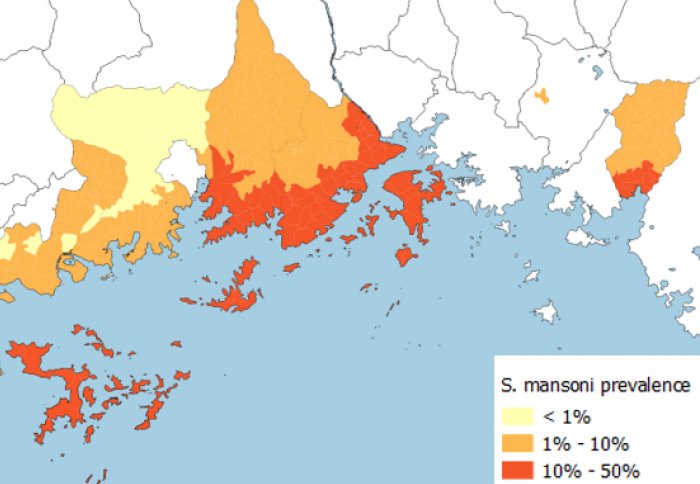

Programmatic surveys have been completed to re-assess infection levels around Lake Victoria in Uganda, to determine an optimal treatment strategy.
After more than six rounds of treatment for schistosomiasis, the Vector Control Division of the Ministry of Health in Uganda needed to review the treatment strategy for eight districts. The review was to ensure that resources, such as people’s time, funds for implementation and the drugs to treat schistosomiasis were targetted to those areas which were still most in need.
In May 2016, to support the review, the Ministry of Health and SCI, began work on surveys to reassess the distribution of schistosomiasis. The analysis of these data has now been completed through the collaborative efforts and revised maps of schistosomiasis infection risk in the region have been produced.
The reassessment survey found that areas in close proximity to the lake still had the highest levels of infection, but that the numbers of people infected had substantially reduced since the national MoH programme commenced. The survey also highlighted that further in-land from Lake Victoria, previously thought to have a low number of infections, or infection-free and thus not targeted for drug distribution, were found to harbour some infection.
This work will help determine a revised treatment strategy for the region, to ensure effective allocation of resources and to sustain and increase the impact of the treatment programme.
Partnerships are being built with other organisations to further increase the success of the programme as it progresses, such as with Johns Hopkins University, to influence behaviour change to improve health; The Natural History Museum, to map freshwater snail populations (which harbour schistosomiasis infection); and WASH initiatives.
“Uganda has a very successful and knowledgeable schistosomiasis treatment programme, which has been having a clear impact, given the re-assessment results. However, there are some areas, very remote and difficult areas, that still carry diseases transmission. The Ministry of Health, with its partners, are working together to determine how best to continue the treatment, how frequently to distribute it and to whom. This is a huge undertaking, as Uganda has a very large transmission zone, Lake Victoria. Tackling this takes a lot of innovation, planning, human resources and funding,” says Jane Whitton, SCI’s Programme Manager for Uganda and Malawi.
Article text (excluding photos or graphics) available under an Attribution-NonCommercial-ShareAlike Creative Commons license.
Photos and graphics subject to third party copyright used with permission or © Imperial College London.
Reporter

Demran Ali
School of Public Health

Contact details
Email: press.office@imperial.ac.uk
Show all stories by this author


